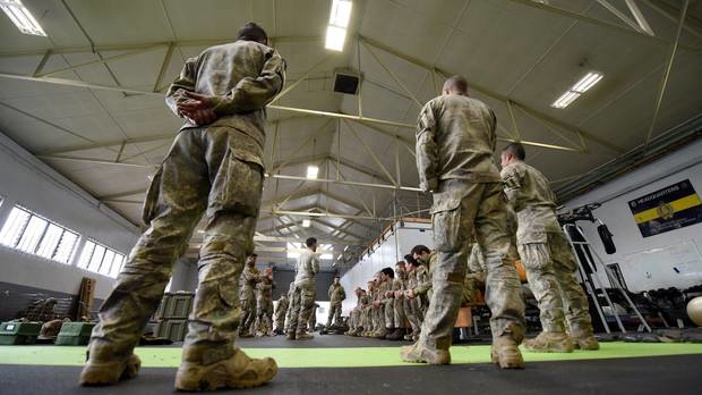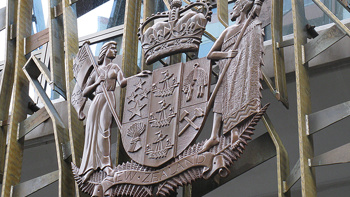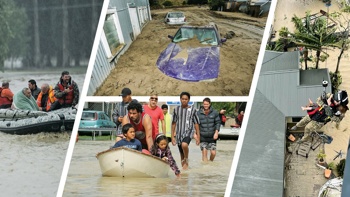Different regions could have moved down alert levels earlier than others if Cabinet accepted a plan put together by the National Advice Management Centre.
Officials divided the country into the 16 Civil Defence regions requiring at least 84 road blocks enforced by the Defence Force with strict criteria for crossing boundaries.
It would have affected up to 2000 farms and could have undermined the social licence of the whole Covid-19 response, officials said.
They also looked at fewer larger regions which would have been less resource heavy.
The idea was not supported by the Health Ministry, Police, Corrections, Oranga Tamariki and the Ministry of Justice.
Ultimately, Cabinet rejected regional de-escalation and moved the whole country out of lockdown in one go.
The advice is among thousands of documents released in today's government document dump and is dated April 15, when New Zealand was in the middle of lockdown.
Geographically differentiated de-escalation could have been implemented by establishing regional boundaries and only allowing regional travel for:
- Freight.
• Essential workers doing essential work.
• Relocating a home or business only from a de-escalated region to a higher alert region.
• Emergencies and following court orders.
• Compassionate reasons.
• Foreign nationals leaving New Zealand.
• New Zealanders returning home.
Roadblocks, road signs, checkpoints and public information would have been used to enforce the plan and regional boundaries were drawn up based on territorial authorities, regional councils, health boards, natural boundaries and local civil defence support.
/cloudfront-ap-southeast-2.images.arcpublishing.com/nzme/QI3KF2P3SBAANEH6GX2XPDLLBU.png)
/cloudfront-ap-southeast-2.images.arcpublishing.com/nzme/F6AROKGY7NG5VHCM7UBCS2KOAA.png)
The plan was put together after ministers asked for a plan on the feasibility of regional de-escalation on April 9.
At that time, it was already clear different parts of the country hadn't been impacted equally by Covid-19 and the triggers for stepping down alert levels would be met by different regions sooner, the advice said.
Officials said regional de-escalation wasn't without its challenges and carried costs and risks but was achievable if strictly enforced.
It would also mean some businesses would be placed at a competitive disadvantage, but this and other risks were materially exceeded by the economic and social benefits.
"We know that the social, economic, fiscal and non-Covid health costs of the level 4 restrictions are growing. While the intent is that the health benefits over the long run justify these controls, it is imperative on government to ensure that this is the case.
"In other words, we should be looking for ways to achieve health outcomes at the lowest possible societal cost and not impose management controls where they are not needed."
The plan was not supported by the Ministry of Health because it believed it would undermine public cooperation with public health requirements if people saw neighbouring regions treated differently.
This was acknowledged by National Advice Management Centre officials which said a geographical step-down could undermine the social license on which the wider Covid-19 strategy.
"It is also possible, however, that social license is eroded where regions feel they are being unnecessarily held back."
It was also not supported by police, Corrections and the courts as the justice sector operated as a national system. Police also had serious concerns about the extent of resources it would take to enforce the boundaries and the social license impact of doing so.
Police recommended "hard road block" enforced by the Defence Force instead of "soft" road blocks enforced by police.
A plan involving the six CDEM regions would be very resource-heavy with Waikato requiring 26 control points while smaller areas like Northland would require three, West Coast needing five and Taranaki needing four.
And differential access to justice would likely make people "frustrated and volatile" and could create inequities, particularly in areas with larger Māori populations, and meant people would experience different limits on their human rights across the country.
As well, some of the proposed boundaries didn't align with iwi boundaries, for example Ngāi Tūhoe sits across three regions, so iwi would need to be consulted before the plan was implemented.
And in order to cross a boundary, someone would have to present information like a letter, a medical certificate, a notice on compassionate grounds or evidence of an outbound flight.
Ministers also had to consider how it would be enforced in relation to travel by sea, particularly personal boat, which posed a risk.
There was also a risk borders could be perceived as arbitrary, particularly for people who lived close to a border.
A regional approach would have also impacted between 1200 and 2000 farm businesses and owners, workers and contractors would be anticipated to move themselves, stock and families as a result, the Ministry of Primary Industries advised.
Regional de-escalation would be harder to communicate than a nationwide uniform move, but officials said "the task becomes easier" when the regions were big like proposed in the paper.
Cabinet ultimately decided to move the country in one go, despite many regions without active cases calling to move out of lockdown early.
Take your Radio, Podcasts and Music with you










